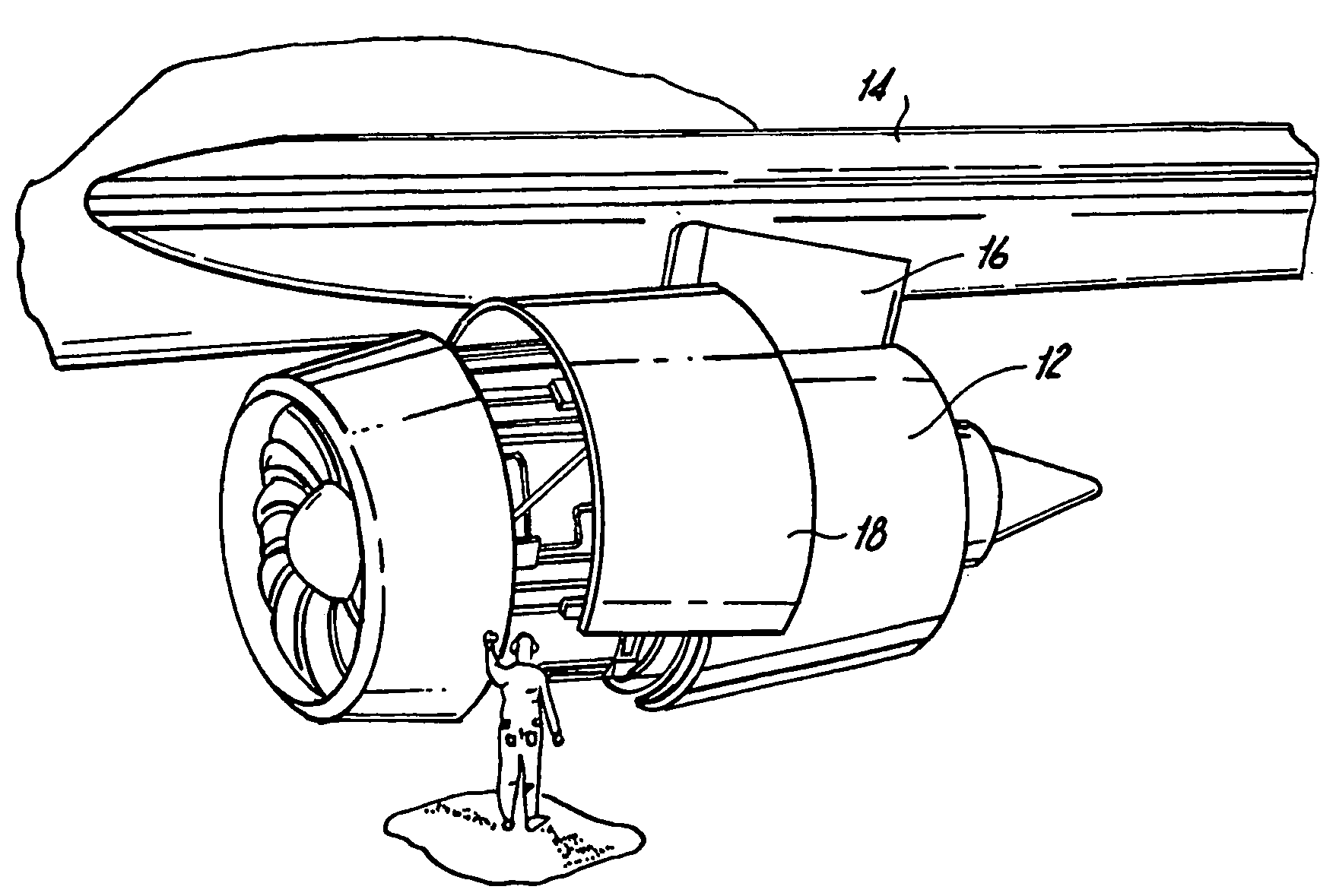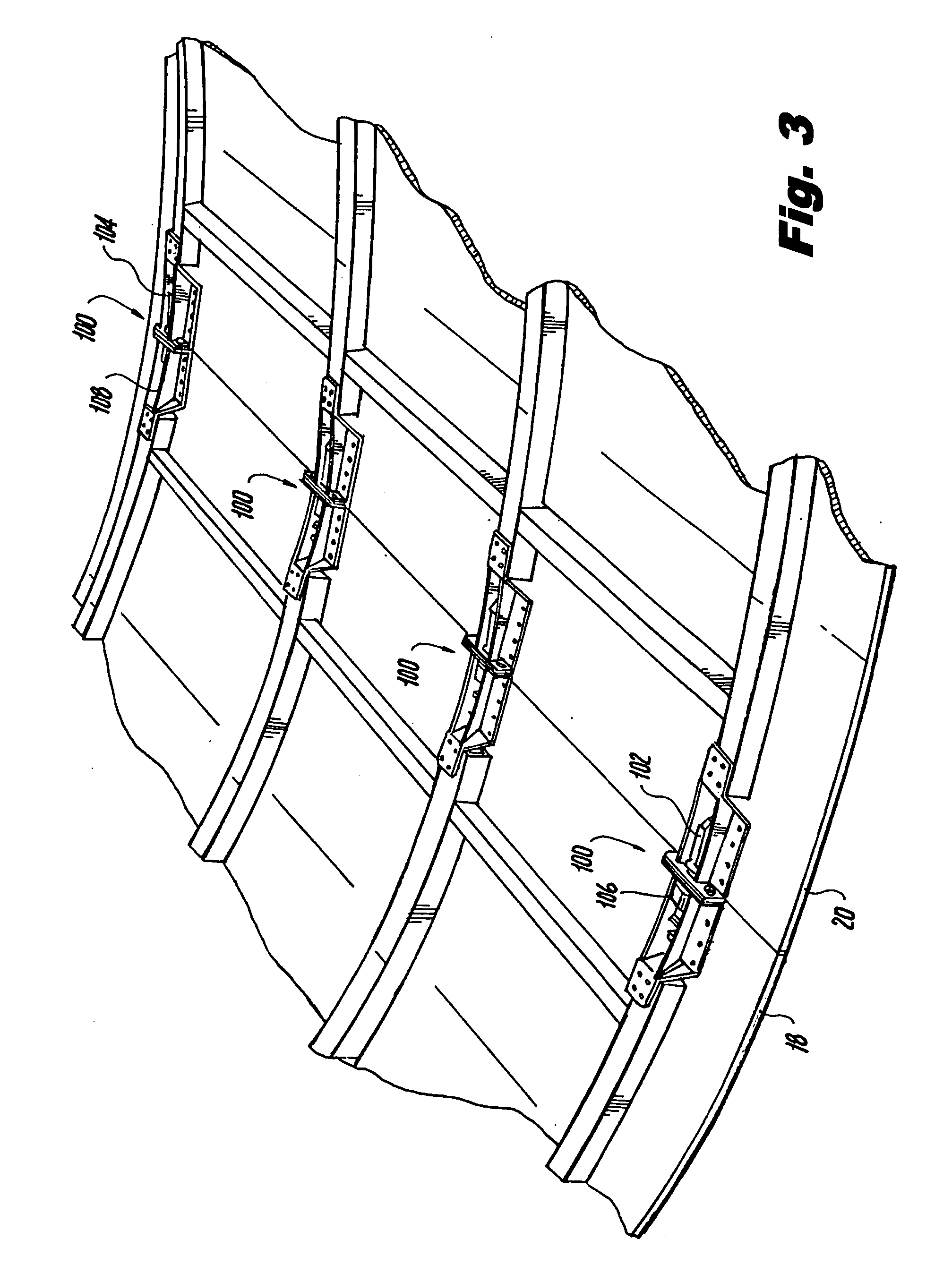Method and component for determining load on a latch assembly
a technology of latch assembly and sensor, which is applied in the direction of instruments, aircraft accessories, power plants, etc., can solve the problems of engine cowl door incident, failure of ground crew to securely latch, and failure of cowl door malfunction during take-off or flight, so as to reduce aerodynamic profile, effective notify, and add weight
- Summary
- Abstract
- Description
- Claims
- Application Information
AI Technical Summary
Benefits of technology
Problems solved by technology
Method used
Image
Examples
Embodiment Construction
[0033]Reference will now be made in detail to the present preferred embodiments of the invention, examples of which are illustrated in the accompanying drawings. The method and corresponding steps of the invention will be described in conjunction with the detailed description of the system. The devices and methods presented herein may be used for detecting when a latch is (and is not) properly secured. The present invention is particularly suited for detecting when aircraft engine cowl doors are securely latched.
[0034]In brief overview, a wireless latch detection system (WLDS) uses strain gauges, a microcontroller and an antenna integrated in a latch pin to directly ascertain a load of a latch assembly. When a latch assembly such as on the cowl doors is properly closed, the latch assembly is loaded and the WLDS transmits an indication of the closed condition. Otherwise, the WLDS transmits an indication that the latch mechanism is unloaded, e.g., in the open position. Further, the st...
PUM
 Login to View More
Login to View More Abstract
Description
Claims
Application Information
 Login to View More
Login to View More - R&D
- Intellectual Property
- Life Sciences
- Materials
- Tech Scout
- Unparalleled Data Quality
- Higher Quality Content
- 60% Fewer Hallucinations
Browse by: Latest US Patents, China's latest patents, Technical Efficacy Thesaurus, Application Domain, Technology Topic, Popular Technical Reports.
© 2025 PatSnap. All rights reserved.Legal|Privacy policy|Modern Slavery Act Transparency Statement|Sitemap|About US| Contact US: help@patsnap.com



